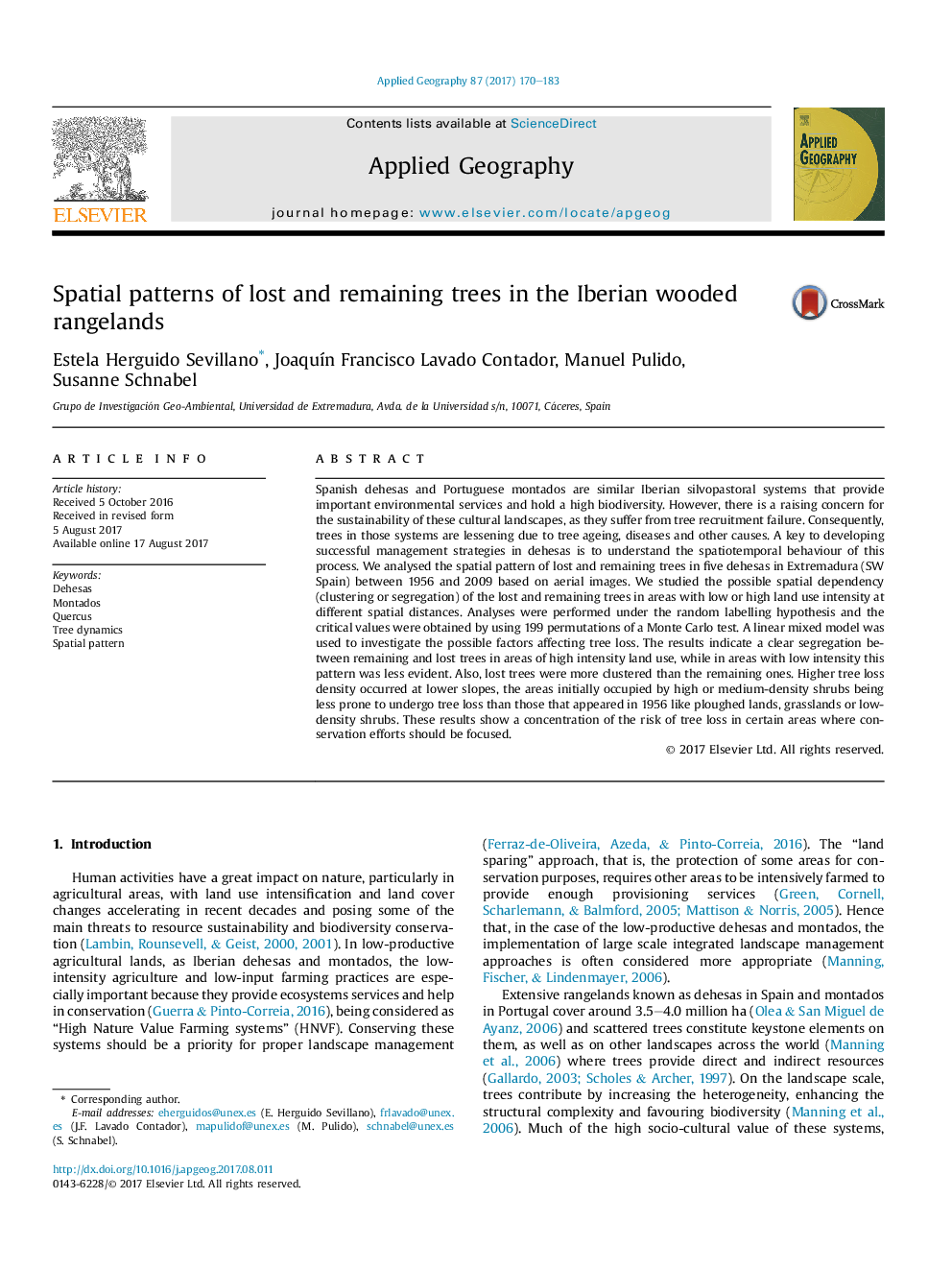| Article ID | Journal | Published Year | Pages | File Type |
|---|---|---|---|---|
| 6458387 | Applied Geography | 2017 | 14 Pages |
â¢Long-term sustainability of Iberian dehesas and montados is threatened.â¢Spatial and temporal (1956-2009) patterns of lost and persisting trees are studied.â¢Spatial patterns differ on high vs. low land use intensity areas.â¢Laws regulating tree logging influenced loss ratios.â¢Topographical and land use/cover factors explain tree loss vs. persistence.
Spanish dehesas and Portuguese montados are similar Iberian silvopastoral systems that provide important environmental services and hold a high biodiversity. However, there is a raising concern for the sustainability of these cultural landscapes, as they suffer from tree recruitment failure. Consequently, trees in those systems are lessening due to tree ageing, diseases and other causes. A key to developing successful management strategies in dehesas is to understand the spatiotemporal behaviour of this process. We analysed the spatial pattern of lost and remaining trees in five dehesas in Extremadura (SW Spain) between 1956 and 2009 based on aerial images. We studied the possible spatial dependency (clustering or segregation) of the lost and remaining trees in areas with low or high land use intensity at different spatial distances. Analyses were performed under the random labelling hypothesis and the critical values were obtained by using 199 permutations of a Monte Carlo test. A linear mixed model was used to investigate the possible factors affecting tree loss. The results indicate a clear segregation between remaining and lost trees in areas of high intensity land use, while in areas with low intensity this pattern was less evident. Also, lost trees were more clustered than the remaining ones. Higher tree loss density occurred at lower slopes, the areas initially occupied by high or medium-density shrubs being less prone to undergo tree loss than those that appeared in 1956 like ploughed lands, grasslands or low-density shrubs. These results show a concentration of the risk of tree loss in certain areas where conservation efforts should be focused.
